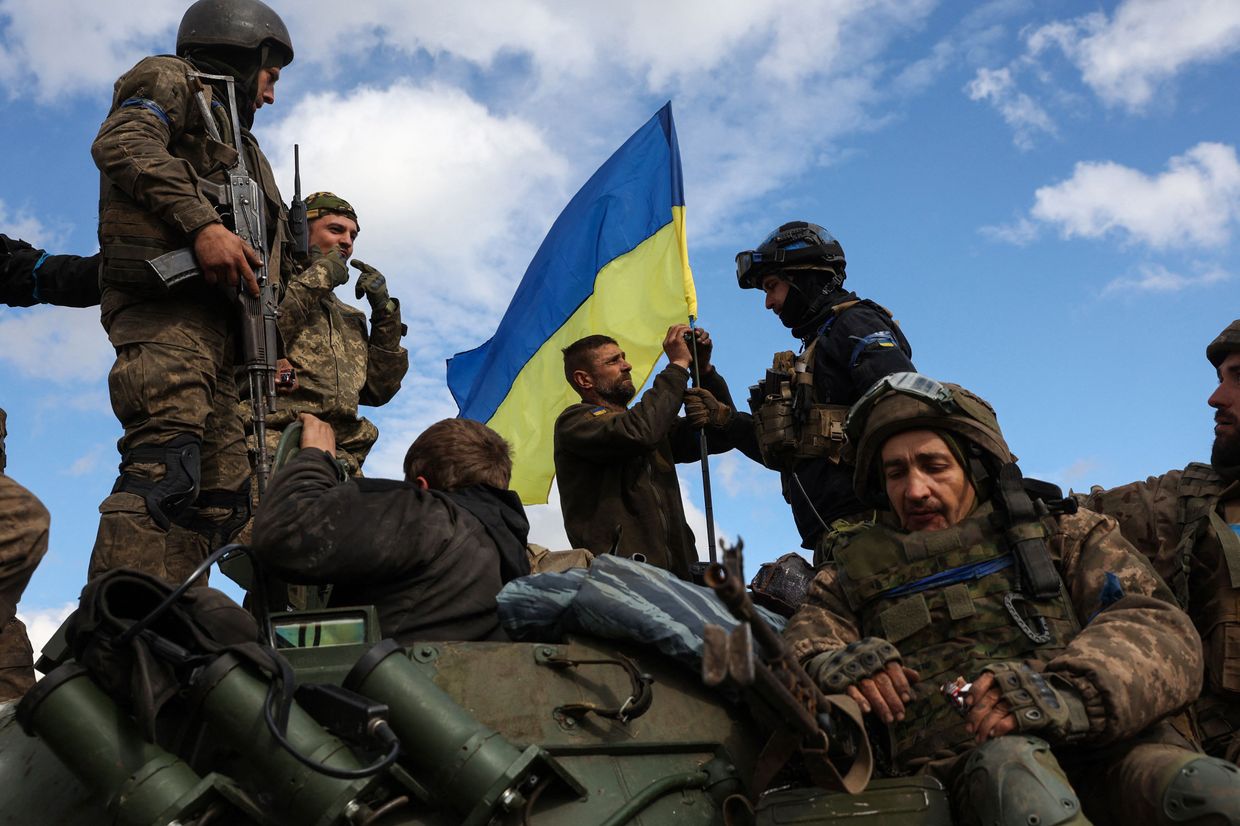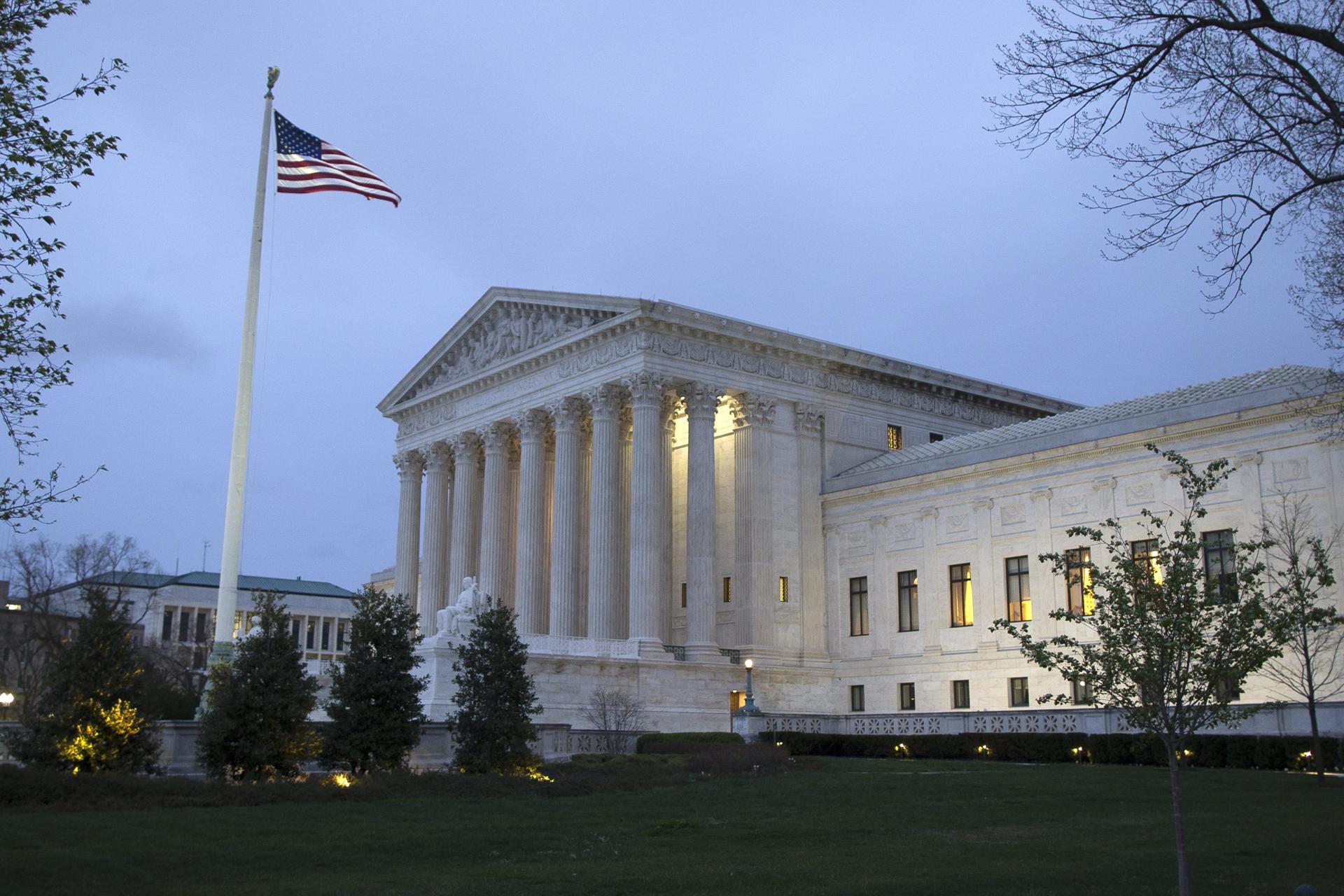Support independent journalism in Ukraine. Join us in this fight.
Russia’s war and occupation of large swaths of Ukraine have led to hundreds of churches being damaged or destroyed, dozens of priests killed or kidnapped, and entire religious groups that don’t conform to Moscow’s brand of Orthodoxy being banned.
With entire Ukrainian cities being leveled by Russian artillery fire, religious sites caught in the crossfire could be simply seen as manifestations of Russia’s disregard for civilian collateral damage.
Experts believe, however, that attacks against Ukrainian priests and religious sites aren’t arbitrary. The Kremlin is weaponizing religion and using it as a tool of control and propaganda.

“We can consider this a systematic action by Russian authorities. This kind of instrumentalization of religion is inherent to the Russian political system,” said Ruslan Khalikov, a Ukrainian religious expert and the head of the “Religion on Fire” project that documents the damage Moscow’s war wrought to Ukraine’s religious life.
“Indeed, Russian troops systematically destroy churches and kill and kidnap both priests and parishioners,” Karen Nikiforov, who also works with the “Religion on Fire” project, said.
Entire religious groups in the Russian-occupied parts of the country have been repressed or, as is the case with the Greek Catholic Church in occupied parts of Zaporizhzhia Oblast, completely banned. Parishes of the autocephalous Orthodox Church of Ukraine have disappeared completely from the occupied regions.
Portrait of the Invader: 2 years of Russian soldiering in Ukraine
In two years of total war, Moscow has tried every trick to keep the death march going. It held a draft, expanded state-sponsored mercenary companies, recruited convicted prisoners, integrated proxies from occupied Donetsk and Luhansk oblasts, and forcibly conscripted Ukrainians in occupied territor…

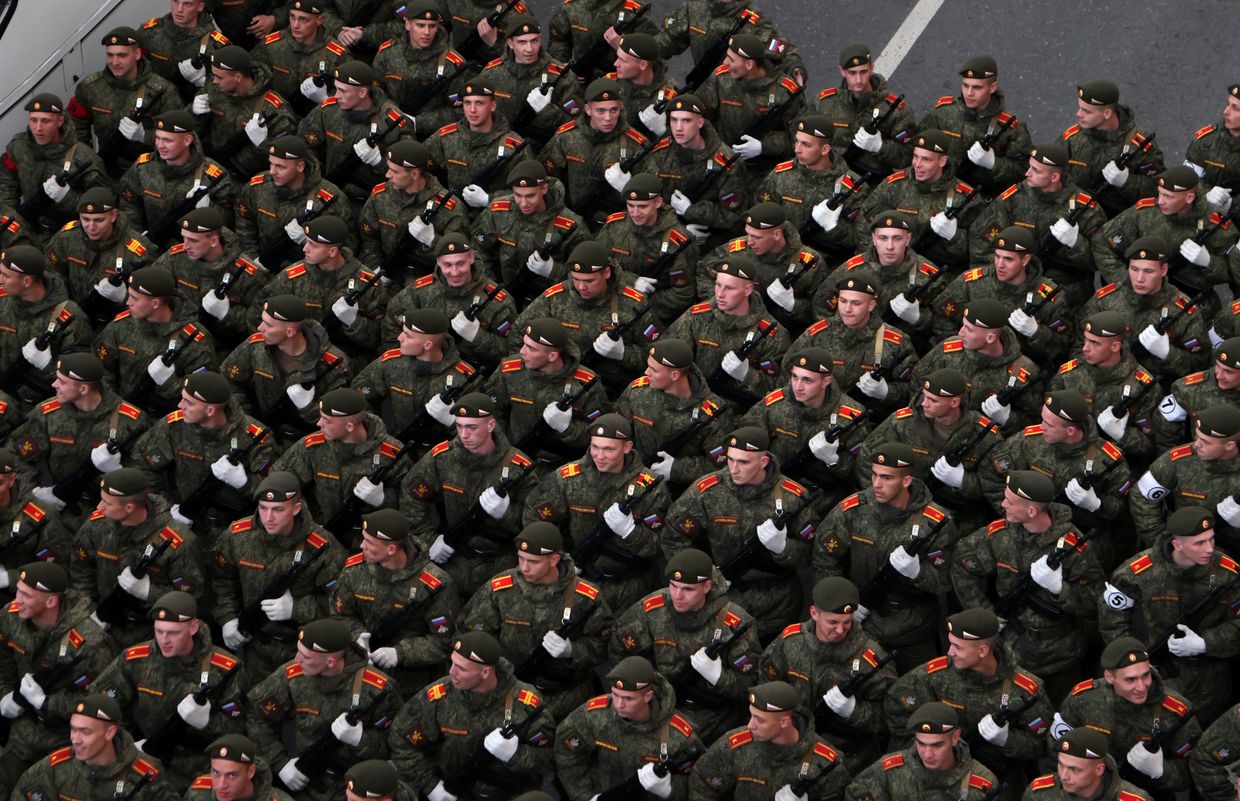
“This behavior is characteristic of Russia’s relationship with religious organizations,” Nikiforov said, explaining that Moscow practices “a strict hierarchical model of state-church relations” that promotes dominance of “traditional” government-controlled groups like the Russian Orthodox Church (ROC) over various “undesirables.”
Moscow’s suppression and absorption of Ukrainian religious life confirms its “intention not only to occupy Ukraine’s territory, but to eliminate Ukrainian structures and replace them with the Russian ones in order to fully integrate them into the ‘Russian space,'” Khalikov said.

Extensive research and testimony reveal that while Russia claims to lead its war in the name of God, “the damage inflicted by Russian occupation forces to Ukraine’s religious diversity has been enormous,” Nikiforov added.
Persecuting minorities
Since the full-scale invasion began in 2022, the expansion of Russian control over Ukrainian territory has allowed the Russian Orthodox Church to expand as well – a religious conquest marching alongside the military one.
Priests who refused to bow to the Russian church have been driven out, abducted, or murdered.
“They (religious organizations) are allowed to exist freely only if they fully and publicly support the authorities, namely their military actions,” Khalikov said.
“Religious groups that are not ready to express such support, such as the Jehovah’s Witnesses, independent Muslim communities, and individual religious leaders, are persecuted both in Russia and in occupied territories of Ukraine.”
The Russian Orthodox Church has been vital in promoting and legitimizing Russian President Vladimir Putin’s rule at home and power projection abroad.
The church’s 77-year-old head, Patriarch Kirill (born Vladimir Gundyayev), has been a close ally of Putin, praising his rule as a “gift from God” and publicly supporting the war against Ukraine – subsequently straining relations with other Orthodox churches.
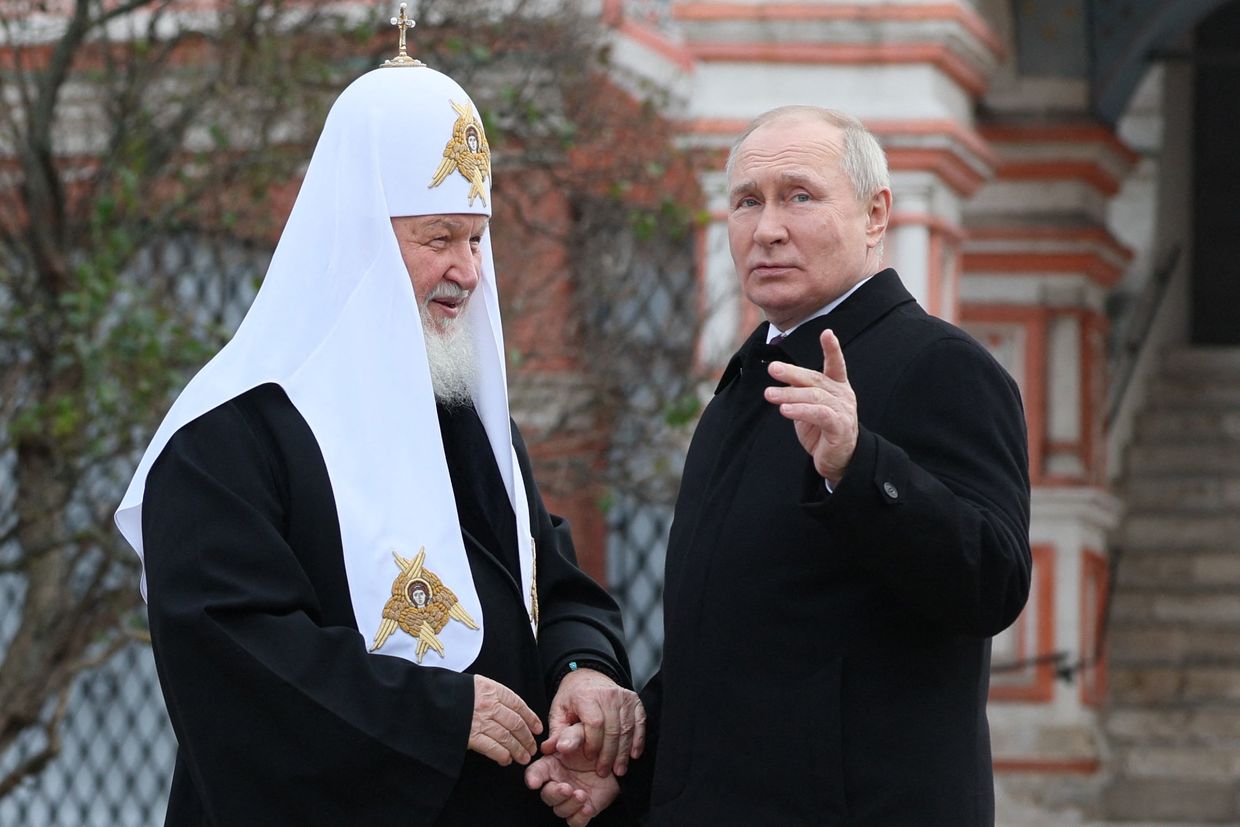
“If a person remains faithful to his calling, and if he fulfills his duty and dies, then as a duty, he performs a feat that is equivalent to a sacrifice,” Patriarch Kirill said following Russia’s 2022 fall mobilization campaign.
“This sacrifice washes away all sins,” the head of the Russian Orthodox Church said, referring to Russian soldiers who were mobilized to fight against Ukraine.
In 2016, the Russian parliament adopted laws that permitted the activities of only those religious organizations that were registered with the state while banning missionary work outside of permitted areas – a move seen by many as a crackdown against Evangelical Protestants and other religious minorities.
Whether afraid or indifferent, regular Russians enable autocracy
For global audiences watching Moscow’s tightly-choreographed “election-style event” this weekend, Russia appears to be a country transformed – a militarized society where dissent is simply no longer tolerated. But the truth is that in the two years since the Kremlin launched its full-scale invasion…

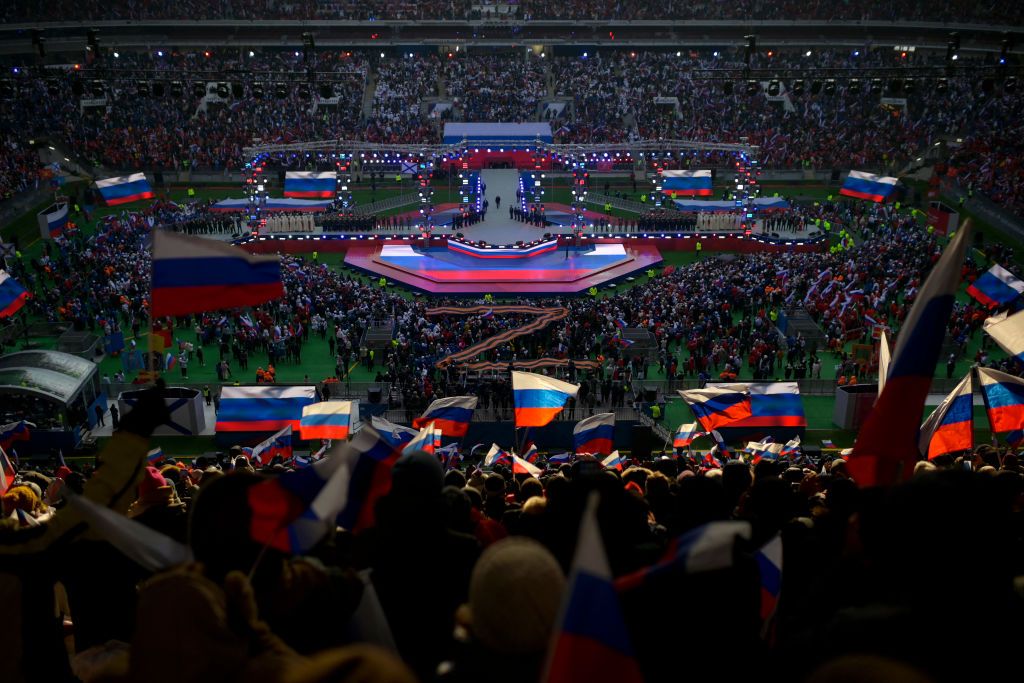
Jehovah’s Witnesses, Hizb ut-Tahrir, Falun Gong, several Protestant evangelical churches, and many other denominations have been branded in Russia as extremist or terrorist, and their members persecuted and imprisoned.
After Moscow occupied Ukraine’s Crimea and parts of the Donbas in 2014, these religious groups, legal in Ukraine, would face the same pressure.
Real or perceived affiliation with the Islamist group Hizb ut-Tahrir has served as justification for Russian authorities on the occupied peninsula to oppress, imprison, and abuse Crimean Tatars. Russia has already jailed 117 members of this group, issuing sentences of up to 19.5 years in prison, said Viktor Yelenskyi, religious scholar and head of the State Agency of Ukraine for Ethno-Politics and Freedom of Conscience (DESS).

In eastern Ukraine, Russian-backed militants likely tortured and murdered four members of the Pentecostal church and suppressed local Protestant, Catholic, and independent Orthodox churches.
“Evangelicals and Mormons (for years) were treated as American spies and were banned completely in (Russian-occupied territories of Donetsk and Luhansk oblasts),” Yelenskyi said
These efforts have only increased since the start of the full-scale invasion and after Russia illegally annexed Ukraine’s partially occupied Donetsk, Luhansk, Zaporizhzhia, and Kherson oblasts and began enforcing its rule.
“Legal activity of Protestant churches on the territories (occupied since 2014) has effectively ceased since most of them were unable to register according to… Russian guidelines,” Khalikov noted.

“Russian propagandists have proudly reported on the closing and repurposing of the places of worship of Jehovah’s Witnesses, Evangelical churches, etc.,” the expert said, adding that more than 30 Kingdom Halls – places of worship of Jehovah’s Witnesses – in occupied parts of Ukraine were seized in 2022 and 2023.
Putin's Ukrainian Orthodox Church
But the persecution of Ukrainian Christian groups is more than just a zealous crusade to extinguish “non-traditional faiths.”
For hundreds of years, the majority of Ukraine was part of a Russian-led state.
After Ukraine regained its independence, the Russian-controlled church, called the Ukrainian Orthodox Church of the Moscow Patriarchate (UOC-MP), was dominant – symbolizing Russia’s cultural and religious influence.
Parliamentary committee backs bill on banning Russian-linked religious groups
The bill would prohibit the activities of any religious organizations affiliated with war propaganda or justifying the Russian invasion of Ukraine. Parliament passed the bill in the first reading in October 2023, and the secondary reading is to be held.

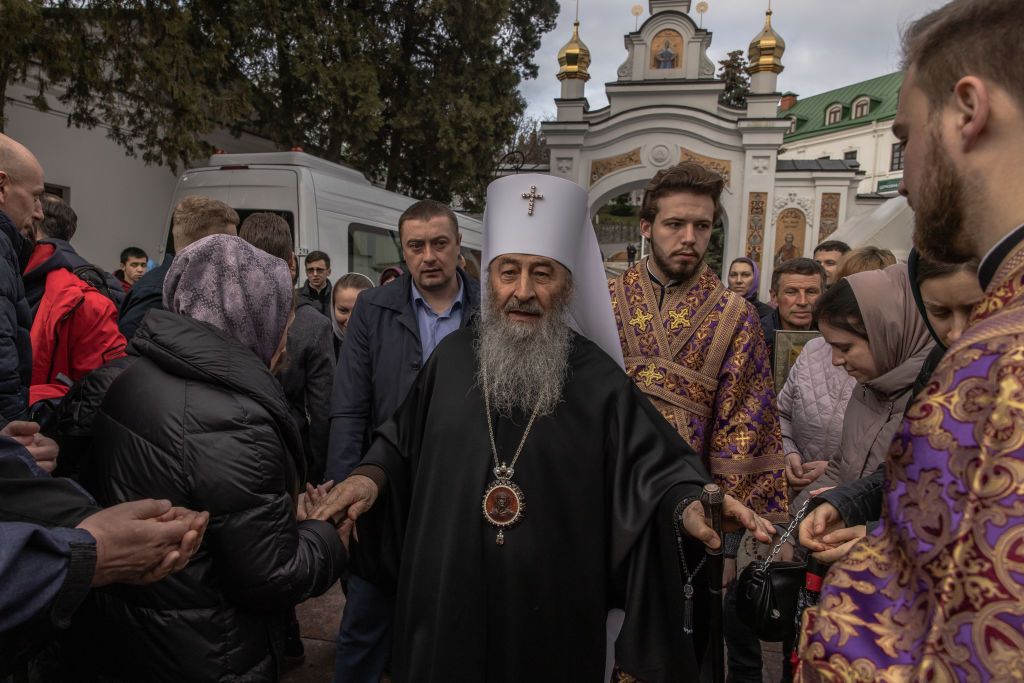
However, Orthodox denominations that rejected Moscow’s authority existed in parallel and gained momentum after Russia launched its war against the country in 2014.
Four years later, the Orthodox Church of Ukraine, or OCU, was formed, having been granted independence in January 2019 by the spiritual leader of the Orthodox world – Ecumenical Patriarch Bartholomew of Constantinople.
Another major church in Ukraine is the Ukrainian Greek Catholic Church (UGCC), widespread in western Ukraine, a region that was independent of Russian influence for most of its history.
The Greek Catholic Church recognizes the supremacy of the Pope while at the same time upholding the Eastern rite.
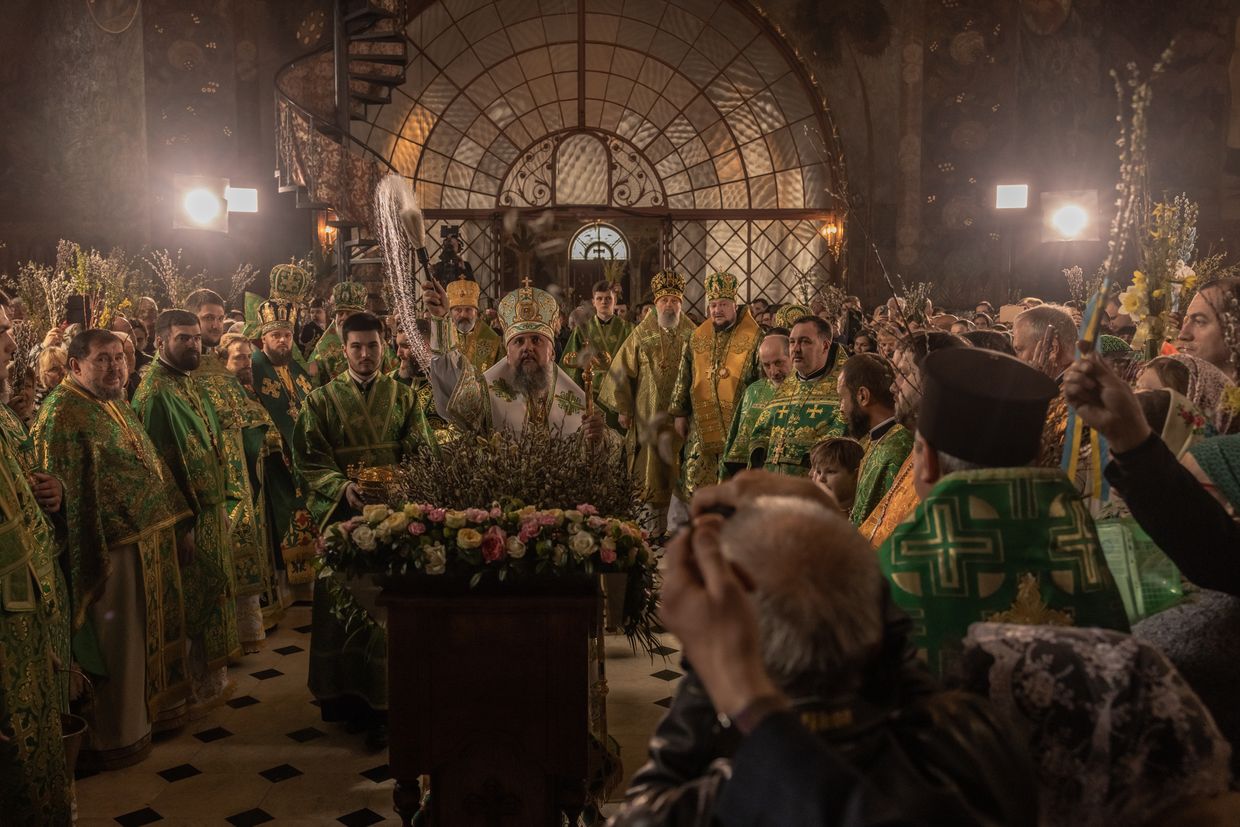
To Moscow, both these churches represent independent Ukraine and are a challenge to Russian rule that is built around the idea that independent Ukraine is nothing more than a historical mistake. These religious institutions are thus seen also as political enemies.
According to an Institute for the Study of War report from last April, 34% of all cases of persecution were aimed against OCU, making it the single most targeted group.
According to Yelenskyi’s organization and the Religion on Fire project, OCU parishes have effectively ceased to exist in Ukraine’s Russian-occupied Crimea while its priests were forced to leave the occupied peninsula.
The Greek Catholic Church has faced harsh repression as well.
Who are the Crimean Tatars?
One of the most overlooked parts of Ukraine is its diversity. The Crimean Tatars – a national minority native to Crimea and recognized as an indigenous people of Ukraine – are a perfect example. The Crimean Tatars – also referred to as Kirimli or Qırımlı – endured wars, mass deportations, and waves…

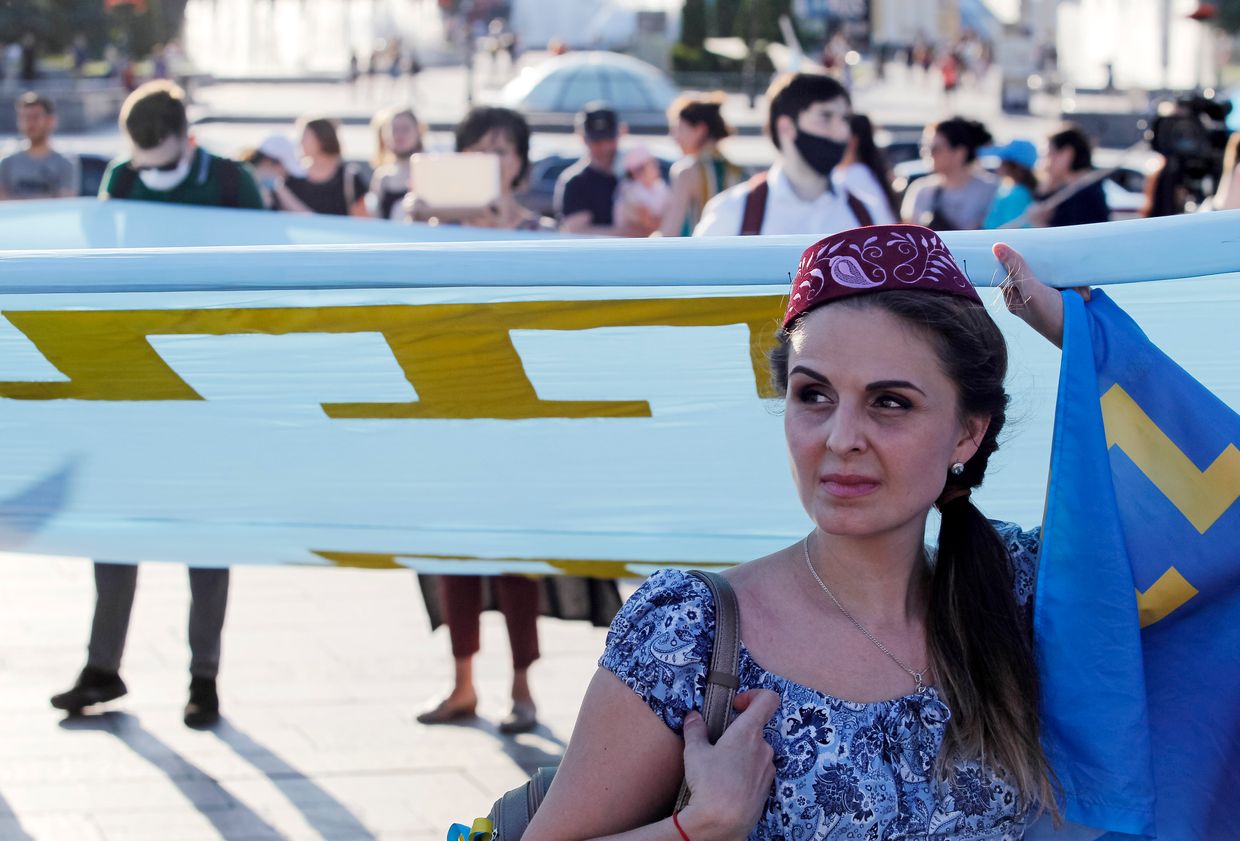
In November 2022, Russia’s National Guard raided a Greek Catholic church in occupied Berdiansk, arresting two of its priests. Russia claimed to have found hidden weapons – a claim the church denied.
A month later, the Russian-installed head of the occupied Zaporizhzhia Oblast, Yevgeny Balitsky, banned all the church’s activities while also confiscating its property. Several religious organizations involved in social and humanitarian work were also prohibited.
The occupation authorities justified the ban by claiming that the Ukrainian Greek Catholic Church followers had participated in anti-Russian riots, “distributed literature with appeals to violate the territorial integrity of the Russian Federation,” and “participated in extremist activities.”
“The only religious communities allowed to function more or less freely in the occupied territories – provided they prove themselves loyal – are those of the Ukrainian Orthodox Church of the Moscow Patriarchate,” Khalikov said.
However, not even UOC-MP’s parishes have been able to avoid the pressure.
Three of its dioceses in occupied Luhansk Oblast – Alchevsk, Luhansk, and Rovenky – have been re-registered under ROC, placing them under the direct authority of the Russian church. UOC-MP dioceses in Dzhankoy, Simferopol, and Feodosia in occupied Crimea have also been absorbed by ROC.
The same happened later to the diocese in Berdiansk. Meanwhile, in occupied parts of Kherson Oblast, ROC illegally established its own Skadovsk diocese after Russia retreated from the regional center of Kherson during Ukraine’s 2022 counteroffensive in Kherson Oblast.

Yelenskyi said that the Russian church has already absorbed nine UOC-MP dioceses representing around 1,600 parishes.
UOC-MP has not officially commented on losing its dioceses to the Russian Orthodox Church. Its representative did not respond to the Kyiv Independent’s request for comment.
The church’s silence is all the more surprising when contrasted with UOC-MP’s fervent opposition to its communities voluntarily transferring to the independent Orthodox Church of Ukraine, following parishioners’ request.
“Given the inherent imperialism of Russian politics, the conquest of new territories does not allow the preservation of old institutions but absorbs them into the Russian ones,” Nikiforov said.
Disappeared priests
As of March, almost 570 Ukrainian religious buildings have come under fire, Nikiforov said. Roughly one-fourth of these have been destroyed or damaged beyond repair, according to Ukraine’s Ethno-Politics and Freedom of Conscience agency.
Notably, UOC-MP’s churches suffered the most, with over 140 of its churches damaged, the agency said in January. Some churches were then captured and used by Russian forces for military purposes, for example, as a cover for troops, thus exposing them to further attack.
The Sviatohirsk Lavra, a major Orthodox monastery in Donetsk Oblast belonging to UOC-MP, was repeatedly attacked by Russian forces in the spring of 2022 while clergy and locals were taking shelter there. At least three monks were killed, and seven people were injured.
UOC-MP’s St. Catherine’s Cathedral in Kherson was shelled last August, and Odesa’s historical Transfiguration Cathedral, also belonging to UOC-MP, was partially destroyed by Russian strikes a month before that.

Christian places of worship are not the only religious sites turned to rubble as a result of Russian aggression. During the siege of Mariupol, Moscow’s troops bombed the mosque of Sultan Suleiman the Magnificent and his wife Roksolana. A local synagogue was destroyed as well.
Karaites, a Turkic-speaking ethnic group from Crimea that adheres to an eponymous branch of Judaism, had to halt religious services in their Kharkiv kenesa (a Karaite synagogue) due to Russian strikes – their only place of worship outside of the occupied peninsula, Nikiforov said.
As of late March, at least 39 priests and pastors have been killed since the start of Russia’s full-scale war against Ukraine, Yelenskyi told the Kyiv Independent.
“We have pastors and chaplains who were murdered,” bishop Ivan Rusyn of the Ukrainian Evangelical Church said during a visit of Ukrainian religious leaders to the United States last fall. He asked his U.S. hosts to “hear our cries.”
“We are not talking (only) about the taking over of churches. We are talking about people who were killed just because they have a different religion,” Rusyn said, stressing the particularly devastating impact Russian aggression had on Protestant denominations.

The first murder cases appeared in the early days of the full-scale invasion. Maksym Kozachyna, a chaplain of the Ukrainian Orthodox Church, was shot by Russian soldiers during their invasion of Kyiv Oblast while reportedly wearing priest’s cassock.
By late March, the number of killed priests had risen to four, including UOC-MP abbot Feodosii (Honcharov), OCU priest Rostislav Dudarenko, and abbot Platon (Morgunov).
Greek Catholic priests Ivan Levytskyi and Bohdan Heleta, the two aforementioned clergymen detained by Russia in occupied Berdiansk in November 2022, have not been seen since. The Ukrainian Greek Catholic Church said last December that it has no information regarding their whereabouts or status.
UOC-MP priest Kostiantyn Maksimov was arrested in May 2023 when trying to cross into Crimea after he allegedly refused to support his Berdiansk diocese being absorbed by ROC. The Russian church seized the diocese a day before Maksimov’s detention. His current location also remains unknown.
In a more recent case, Russian forces reportedly abducted, tortured, and killed Ukrainian priest Stepan Podolchak in the town of Kalanchak in the occupied part of Kherson Oblast on Feb. 15.
According to Suspilne, his “transgressions” were carrying out Ukrainian-language religious services and refusing to work under the authority of the Moscow Patriarchate, yet again proving that Russia’s destruction of Ukraine’s religious life is systematic and not collateral.
10 years of war: A timeline of Russia’s decade-long aggression against Ukraine
Almost immediately following the end of the EuroMaidan Revolution in Ukraine in February 2014, Russia swiftly moved to annex and occupy the Crimean Peninsula. Within a couple of months, unrest erupted in eastern Ukraine followed by Russian-backed militias taking over administrative buildings. The…

